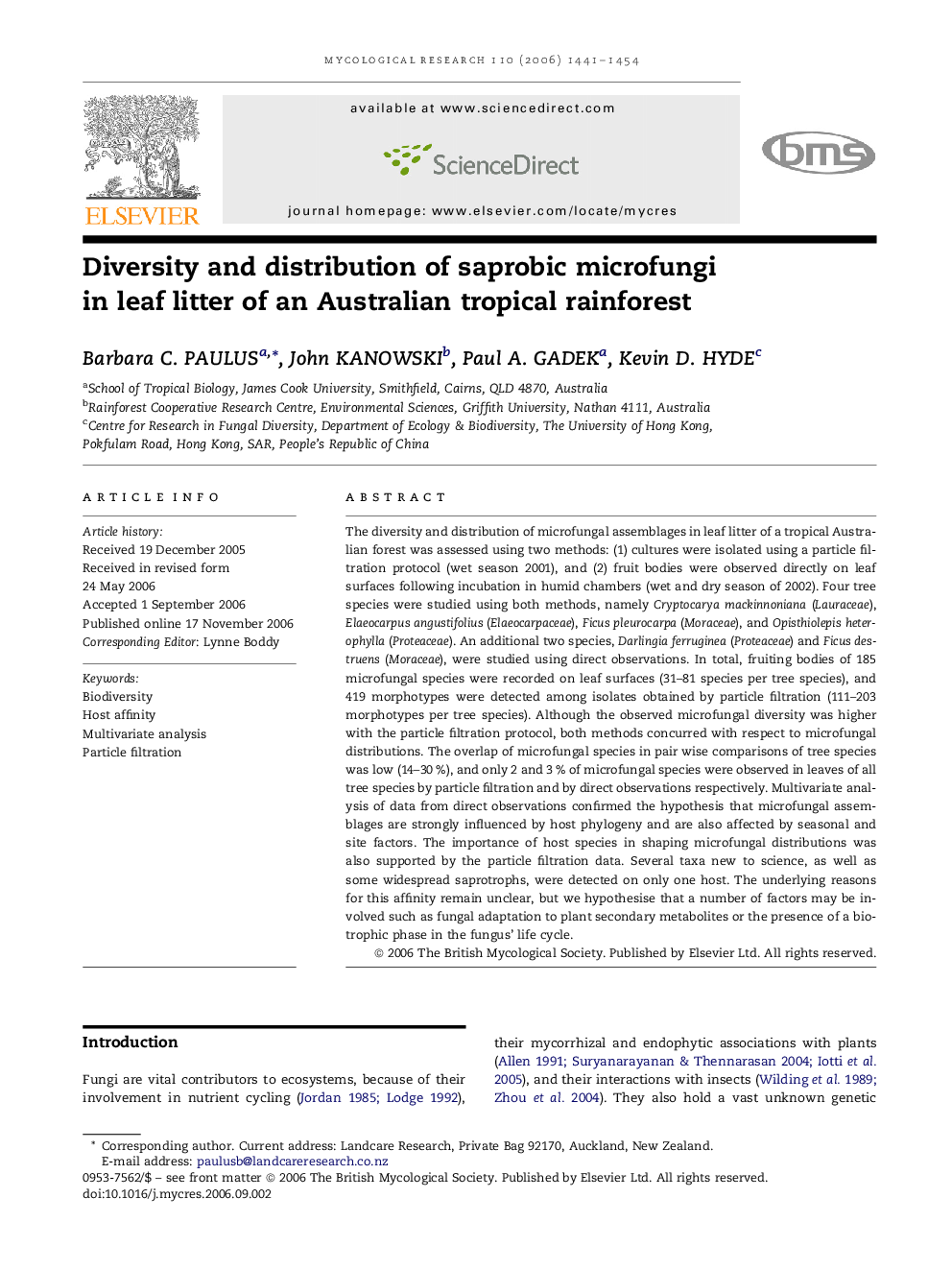| کد مقاله | کد نشریه | سال انتشار | مقاله انگلیسی | نسخه تمام متن |
|---|---|---|---|---|
| 4358017 | 1615873 | 2006 | 14 صفحه PDF | دانلود رایگان |

The diversity and distribution of microfungal assemblages in leaf litter of a tropical Australian forest was assessed using two methods: (1) cultures were isolated using a particle filtration protocol (wet season 2001), and (2) fruit bodies were observed directly on leaf surfaces following incubation in humid chambers (wet and dry season of 2002). Four tree species were studied using both methods, namely Cryptocarya mackinnoniana (Lauraceae), Elaeocarpus angustifolius (Elaeocarpaceae), Ficus pleurocarpa (Moraceae), and Opisthiolepis heterophylla (Proteaceae). An additional two species, Darlingia ferruginea (Proteaceae) and Ficus destruens (Moraceae), were studied using direct observations. In total, fruiting bodies of 185 microfungal species were recorded on leaf surfaces (31–81 species per tree species), and 419 morphotypes were detected among isolates obtained by particle filtration (111–203 morphotypes per tree species). Although the observed microfungal diversity was higher with the particle filtration protocol, both methods concurred with respect to microfungal distributions. The overlap of microfungal species in pair wise comparisons of tree species was low (14–30 %), and only 2 and 3 % of microfungal species were observed in leaves of all tree species by particle filtration and by direct observations respectively. Multivariate analysis of data from direct observations confirmed the hypothesis that microfungal assemblages are strongly influenced by host phylogeny and are also affected by seasonal and site factors. The importance of host species in shaping microfungal distributions was also supported by the particle filtration data. Several taxa new to science, as well as some widespread saprotrophs, were detected on only one host. The underlying reasons for this affinity remain unclear, but we hypothesise that a number of factors may be involved such as fungal adaptation to plant secondary metabolites or the presence of a biotrophic phase in the fungus' life cycle.
Journal: Mycological Research - Volume 110, Issue 12, December 2006, Pages 1441–1454